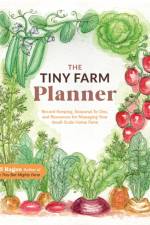av Rony S Delgarde
585,-
Alguna vez ha soñado con hacer una diferencia significativa en el mundo o quiso hacer un cambio significativo en su vida, como comenzar un negocio, ganar un doctorado, o mudarse a un nuevo paÃs, pero no tiene idea de cómo desarrollar la fundación para aprovechar cada oportunidad que viene a su camino? Ahora, por primera vez, el autor Rony S. Delgarde comparte sus secretos para el éxito, ofreciendo su vida como un mapa de ruta a lectores como tú que buscan pintar el cambio y vivir sus sueños. Hace más de una década, Rony fundó la organización sin fines de lucro Global Paint for Charity, una de las empresas sociales más impactantes y la primera gestión sostenible del residuo de pintura en el paÃs. La idea era recoger pintura no utilizada de individuos y empresas, reprocesarla, y donarla a artistas de calle para proyectos de mural local y a personas en naciones emergentes que de otro modo no podÃan permitirse pintar sus casas, escuelas y otros edificios en sus comunidades. Lo que comenzó como una visión de una sola persona para ayudar a proteger el medio ambiente, embellecer el mundo y motivar a las personas a la importancia de la colaboración y la equidad social pronto se convirtió en una pasión práctica respaldada por la antigua red y la creación de equipos. Hoy, la organización ha llegado a más de 13 millones de personas en más de 44 paÃses y 45 ciudades. Ha recogido casi cinco millones de libras de pintura, con el objetivo de distribuir mil millones de galones a 55 paÃses en todo el mundo para 2030. Como inmigrante, Rony ha realizado su sueño, a pesar de llegar a Estados Unidos a finales de los 20 con solo 5 dólares en el bolsillo. A través del trabajo duro, la dedicación, y un montón de pruebas, obstáculos y errores, ha sido capaz de convertir su sueño en realidad. Con inicios humildes, Rony, un humanitario global cuyo viaje es un testimonio inspirador de resiliencia, liderazgo y determinación inquebrantable, surgió de diversos antecedentes y superó numerosos desafÃos para impactar al mundo. Su trabajo ha ganado reconocimiento y elogios a lo largo de su ilustre carrera. Reconocido por sus logros excepcionales, ha aparecido en publicaciones de renombre como The New York Times, CNBC, AJC Journal, CNN International, Nasdaq y Fox News, y ha recibido docenas de premios. Su perspectiva única sobre el manejo de la resiliencia, la adversidad y el aprovechamiento de las oportunidades ha empoderado e inspirado a los empresarios y las corporaciones a esforzarse por la grandeza. How To P.A.I.N.T. Change: How A Passion For Paint Offers Inspiration, Closes Deals, And Wins Accolades se embarca en un viaje de emprendimiento social que se extiende más allá de cada galón de pintura y en los reinos del crecimiento personal, el éxito profesional, y el reconocimiento generalizado. Este fascinante libro profundiza en el poder transformador de la pintura, ilustrando cómo un amor por el color puede desencadenar la innovación, influir en la toma de decisiones y elevar su posición en diversos aspectos de la vida. Sirve como entrenador y mentor, proporcionando valiosas perspectivas, estrategias prácticas y hermosas historias para ayudarle a navegar por el mapa hacia el éxito. Deja que el libro te guÃe al coger el cepillo del cambio, mezclar los vibrantes matices de determinación e innovación, y pintar una obra maestra vibrante de éxito y cumplimiento tanto en tus esfuerzos artÃsticos como en la vida cotidiana. Este libro está destinado a utilizar la narración para compartir la experiencia personal de Rony y las cinco claves de la estrategia PAINT-Pasión, Acción, Impacto, Red y Creación de Equipo-que él usó para ayudar a encontrar su propósito y construir una ONG exitosa con recursos limitados en menos de una década. Estos cinco pasos le permitieron, y él sigue utilizándolos.




















